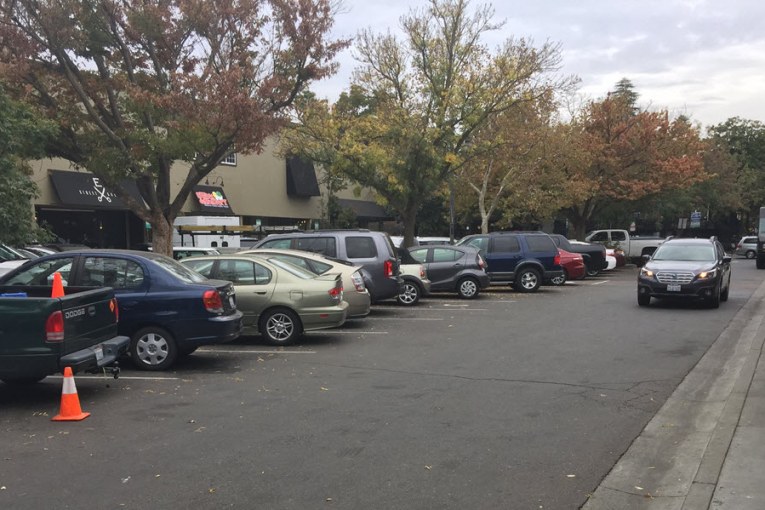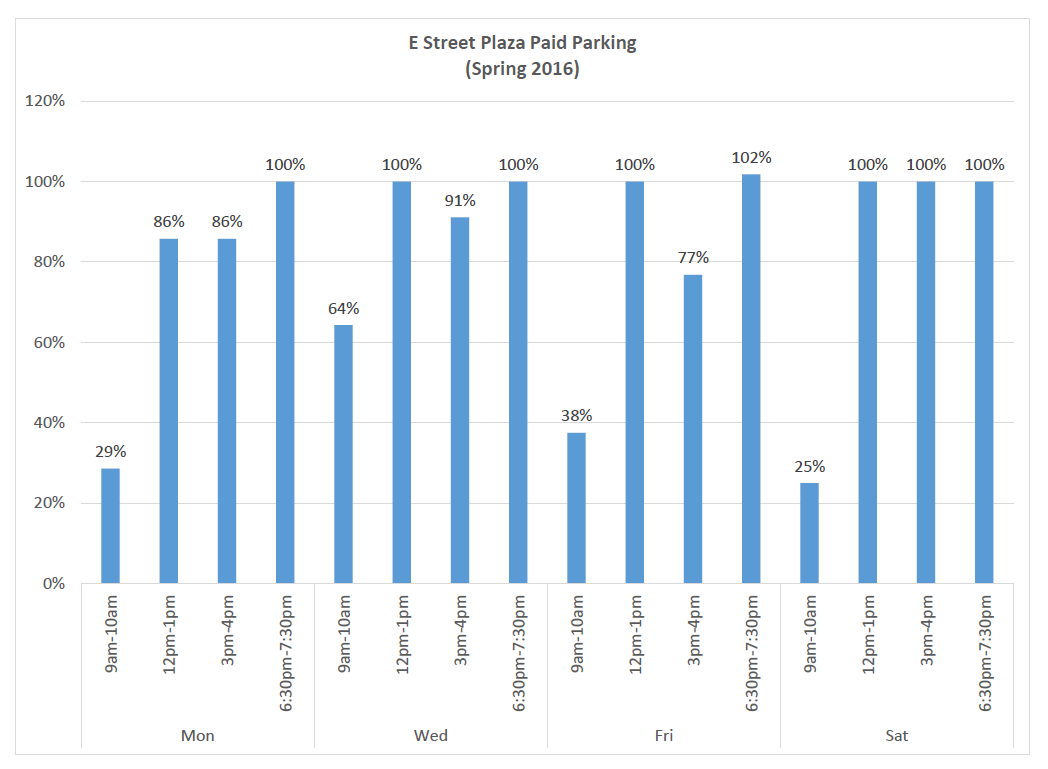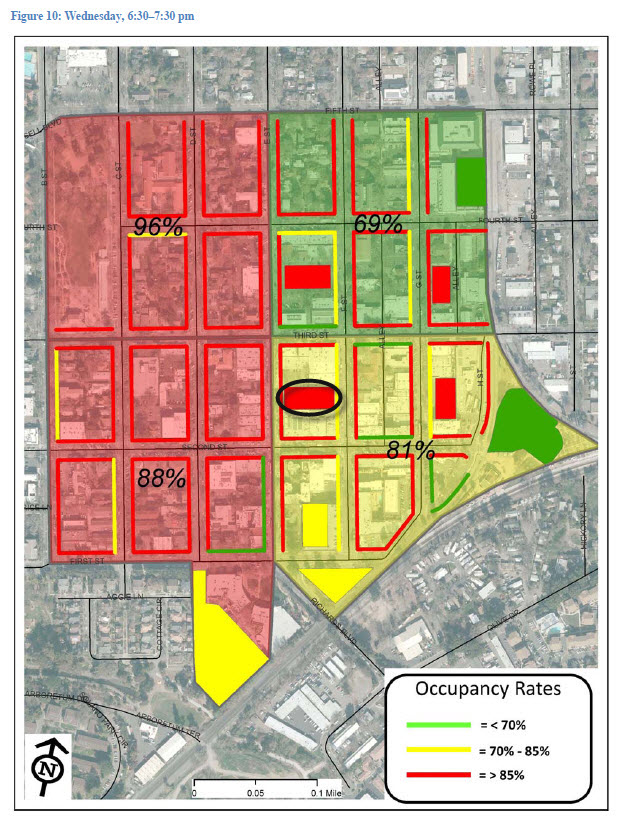

My observation has been that, at least during peak hours, the E Street Plaza paid parking lot is fairly full. However, after Dan Urazandi published his piece with different observations, it seemed like a good idea to go back to actual data which the city has graciously provided.
The city did a comprehensive study back in the spring of 2016 (April). Both on-street parking and off-street public lots and garages were surveyed.
Staff writes, “Generally speaking, the ideal parking occupancy rate is in the vicinity of 85%. At this usage, the parking supply is being efficiently used while spaces remain available for new  arrivals, preventing vehicles ‘circling’ downtown blocks in search of a parking space.”
arrivals, preventing vehicles ‘circling’ downtown blocks in search of a parking space.”
They found that the average occupancy rate for the days and times collected was 70 percent, a slight decline from the fall of 2015. However, downtown experiences parking peaks during the lunch and evening time frames.
The survey found that in Spring 2016, on-street parking occupancy rates were 76 percent while garages were at 64 percent.
The paid parking was surveyed four days a week during four times of the day – 9 am, noon, 3 pm, and 6:30 pm.

Not surprisingly, the survey found that the lot was fairly empty at 9 am. That jibes with the overall impression of downtown, as it is fairly easy to find parking in the morning, probably up until about 11 am – things are fairly empty and by 11 you can still find parking, but the downtown gets really congested about noon and remains that way.
It’s a little surprising that the occupancy was only at 86 percent at noon on Monday. The parking does free up a bit – as you might expect – in the mid-afternoon, although that is also very day-specific. It gets heavily congested in the evening.
When the Vanguard published the data from the spring of 2016, there were maps from four time periods showing the entirety of downtown.




To illustrate the E Street lot, it was circled in black in each of the four times. These are all peak hours, but, as you can see, in each case the E Street lot matched the surrounding area congestion.
It makes sense that when parking is readily available at other times, people are less willing to pay for it. However, when parking is in short supply, there is no appreciable drop off to the rest of the quadrant.
Dan Urazandi writes: “The E Street lot went from free to paid in 2008. I witnessed firsthand that process, which can be taken as a crude microcosm of what will happen throughout downtown if meters come in. The first year of paid parking was terrible. The lot was virtually empty by day, and entirely full at night when parking control was off. After four years it averaged 50-percent full. Now it’s probably 80-percent used, 10 years later. That’s mismanagement of a lot that was consistently near capacity when free. Why expand a failed experiment?”
There are certainly times when the lot is only 80 percent full. But it seems to largely match the overall landscape of the downtown, which on average is about 76 percent full, except during peak hours when especially the southern half of the downtown can be over 90 percent full.
It is particularly interesting to note that during the Wednesday evening sample period from 6:30 to 7:30, the lot is at capacity even though the overall quadrant is only at about 81 percent (and I think if you looked later in the evening, that occupancy rate is a bit low).
Dan Urazandi is correct, however, on one point here. The use of the paid parking did not happen overnight.

Here we can see a rather dramatic drop off in the usage pre- and post-paid parking when it was implemented in 2008. It definitely took a few years for the public to start utilizing paid parking.
It would be interesting to study what was taking place during these times. Was there a reluctance for people to park in the paid spots because the capacity wasn’t reached elsewhere? Was the fact that it was new technology daunting? Were people reluctant to accept the idea of paid parking? Clearly at this point, the usage fairly well matches the rest of the quadrant in the downtown.
That also leads to other key questions – should the council phase in the new paid parking over time so that people can adjust their parking habits? Or should they simply implement it?
Also, what system is best? In the E Street Plaza lot, there are central locations where people can put their money or use a card. Sacramento has an app that works where people can pay for their parking through the app in addition to on machines.
Clearly, we are going to have additional discussions on the impact of paid parking – and it should be based on data.
—David M. Greenwald reporting
Get Tickets To Vanguard’s Immigration Rights Event

Yes! Duh!
You say that, but the neither the comments by Alzada nor the op-ed by Dan had any data analysis in them.
Strange… was completely agreeing, yet you appear to challenge my post… whatever…
And on the desire – we collect data on the desire for:
* Decreasing congestion Downtown
* Certain places (E St. Plaza and other spaces in-between buildings) are most valuable when motor vehicles are excluded, or at least restricted.
* Various other things that cost money, such as water fountains for children to play in, or buses to take buzzed etc people home late at night (piloted by drivers with benefits, not contractors).
We decide what we need money for and we price available parking so that every block or similar has at least one space available at all times.